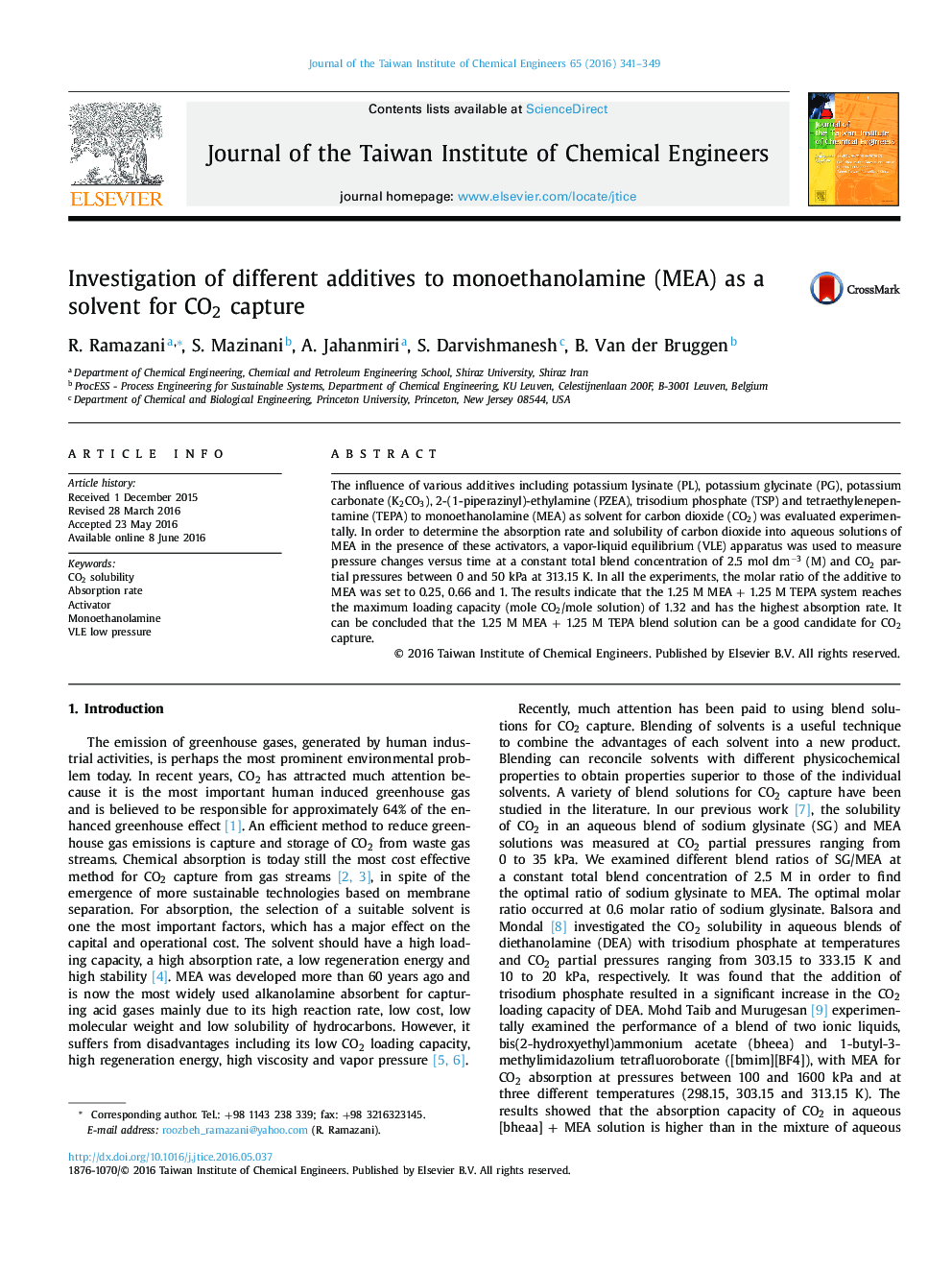| Article ID | Journal | Published Year | Pages | File Type |
|---|---|---|---|---|
| 690229 | Journal of the Taiwan Institute of Chemical Engineers | 2016 | 9 Pages |
•The absorption rate and solubility of CO2 into aqueous solution of MEA in the presence of different additives were evaluated.•TEPA, PZEA, PL, PG, TSP and K2CO3 were considered as additives.•Different molar ratios of additive to MEA were investigated.•Highest absorption rate and highest solubility were achieved for the aqueous solution of TEPA + MEA.
The influence of various additives including potassium lysinate (PL), potassium glycinate (PG), potassium carbonate (K2CO3), 2-(1-piperazinyl)-ethylamine (PZEA), trisodium phosphate (TSP) and tetraethylenepentamine (TEPA) to monoethanolamine (MEA) as solvent for carbon dioxide (CO2) was evaluated experimentally. In order to determine the absorption rate and solubility of carbon dioxide into aqueous solutions of MEA in the presence of these activators, a vapor-liquid equilibrium (VLE) apparatus was used to measure pressure changes versus time at a constant total blend concentration of 2.5 mol dm−3 (M) and CO2 partial pressures between 0 and 50 kPa at 313.15 K. In all the experiments, the molar ratio of the additive to MEA was set to 0.25, 0.66 and 1. The results indicate that the 1.25 M MEA + 1.25 M TEPA system reaches the maximum loading capacity (mole CO2/mole solution) of 1.32 and has the highest absorption rate. It can be concluded that the 1.25 M MEA + 1.25 M TEPA blend solution can be a good candidate for CO2 capture.
Graphical abstractFigure optionsDownload full-size imageDownload as PowerPoint slide
